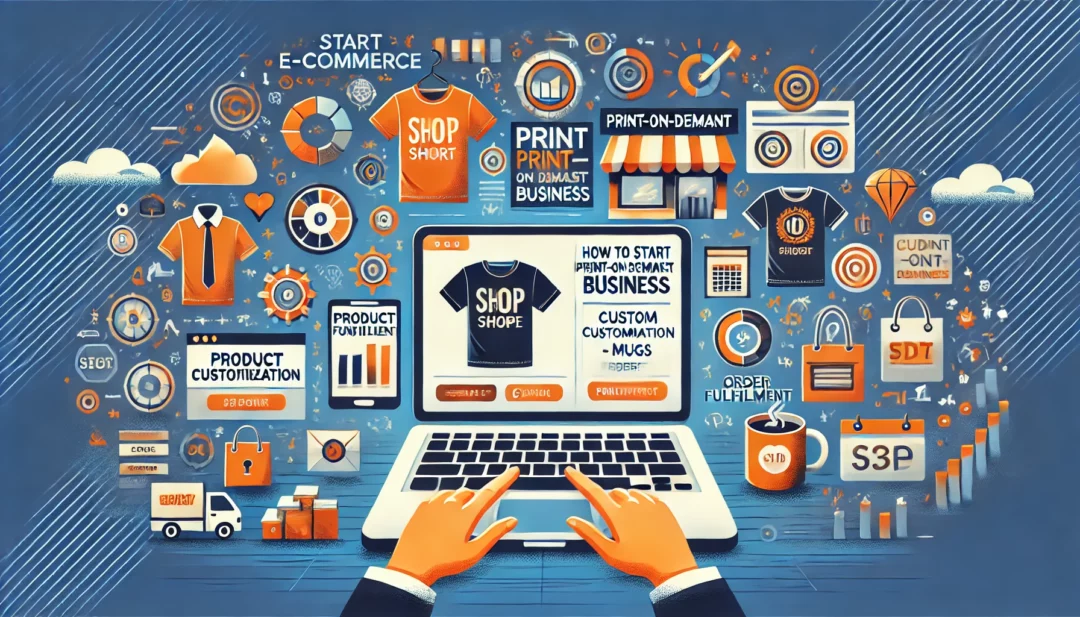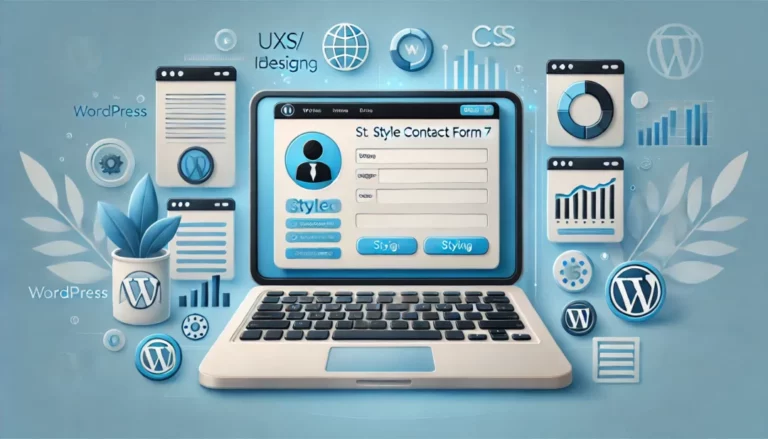
Starting a print-on-demand business is one of the most accessible ways to dive into e-commerce. With minimal upfront costs and no need to manage inventory, you can turn your creative ideas into custom products like t-shirts, mugs, or phone cases. Whether you’re an artist, entrepreneur, or someone looking for a side hustle, this business model offers flexibility and scalability.
To get started, choose a niche that aligns with your interests or market demand. Find a reliable print-on-demand platform, create your unique designs, and upload them onto products. Set up an online store, optimize it for sales, and market your brand to reach your target audience. With the right strategy and dedication, you can build a profitable business that grows with your creativity.
What Is A Print On Demand Business?
A print-on-demand (POD) business is an e-commerce model where you sell customized products without holding inventory. You partner with a POD provider to print and fulfill orders only after a customer completes a purchase. This eliminates the need for upfront stock or large-scale production.
POD businesses typically offer a variety of customizable products, such as t-shirts, mugs, phone cases, and tote bags. For example, you could create designs tailored to specific interests or niches like fitness enthusiasts or pet lovers. These designs are then listed on your online store, and the POD provider handles the printing, packaging, and shipping.
This business model relies on integration with a POD platform like Printful or Printify, which connects directly to your e-commerce store. When a customer places an order, the platform automates the production and delivery process. This creates a seamless workflow, enabling you to focus on designing, marketing, and growing your brand.
Benefits Of Starting A Print On Demand Business
Starting a print-on-demand (POD) business offers unique advantages, making it a popular choice for aspiring entrepreneurs. Key benefits include low startup costs, flexibility, and a vast selection of customizable products.
Low Startup Costs
A POD business eliminates the need to purchase inventory upfront. Products are created only after customers place orders, significantly reducing financial risks. Platforms like Printful and Printify handle production and fulfillment, cutting costs on storage, equipment, and labor. For example, you pay only for the items manufactured and shipped, keeping expenses predictable and manageable.
Flexible Business Model
You can run a POD business from anywhere with an internet connection. Unlike traditional retail models, you’re not tied to physical locations or strict schedules. You control your workload—scaling up during peak demand or minimizing your hours when needed. This flexibility accommodates part-time or full-time entrepreneurship. If you sell internationally, POD platforms manage global shipping logistics, further enhancing operational ease.
Wide Range Of Customizable Products
POD businesses allow you to offer diverse product options to cater to different markets. Popular items include t-shirts, hoodies, mugs, stationery, phone cases, and wall art. Customizing these products with unique designs helps differentiate your brand. For example, you can target niche audiences by featuring trends or themes that appeal to specific groups, increasing your market reach and revenue potential.
Steps To Start A Print On Demand Business
Starting a print-on-demand (POD) business involves following a clear set of steps to ensure efficiency and profitability. Each phase plays a vital role in building a successful business.
Choose A Niche
Define the specific market or audience you want to target. Focus on an area you’re passionate about or one with high demand and less competition, such as eco-friendly apparel or tech-themed merchandise. A well-defined niche makes it easier to create unique, tailored products that resonate with your audience.
Research And Select A Print On Demand Platform
Compare platforms like Printful, Printify, and Teespring based on their pricing, product variety, shipping times, and integrations with e-commerce platforms. For example, Printful has seamless Shopify and WooCommerce plugins, while Printify offers competitive pricing through multiple supplier networks. Ensure the platform you choose supports your niche and meets your quality expectations.
Design Your Products
Create original, eye-catching designs that align with your niche and audience preferences. Use tools like Adobe Illustrator, Canva, or Procreate to generate professional designs. Keep designs scaleable for multiple products, and test prototypes to confirm print quality. Avoid infringing copyrights by using licensed design assets or creating your own artwork.
Set Up Your Online Store
Select a website platform like Shopify, Etsy, or BigCommerce to host your store. Customize your store by showcasing your brand identity with a logo, engaging product descriptions, and high-resolution images. Optimize the check-out process for a seamless user experience. Integrate it with your chosen POD platform for automated order processing and inventory management.
Market And Promote Your Business
Use targeted digital marketing strategies to drive traffic to your store. Run ads on platforms like Facebook and Instagram, optimize your store for SEO by using keywords, and leverage email marketing to engage with existing customers. Collaborate with influencers in your niche or share user-generated content to build social proof and attract more buyers.
Common Challenges And How To Overcome Them
Print-on-demand businesses come with unique challenges that can impact your success. Understanding these issues and knowing how to address them ensures smoother operations and sustained growth.
High Competition
The POD market is highly saturated, with many sellers targeting similar niches. Without differentiation, it becomes difficult to attract customers. Focus on creating unique, high-quality designs that cater to specific audiences. Conduct thorough competitor analysis to identify gaps in the market. Use search engine optimization (SEO) strategies, such as targeting long-tail keywords, to improve your online visibility.
Managing Customer Expectations
Customers often expect fast shipping, perfect products, and responsive service. Since POD relies on third-party fulfillment services, delays or errors can harm your reputation. Set realistic expectations by clearly communicating processing times, delivery windows, and return policies. Work closely with your POD provider to ensure quality control, and use branded email updates to assure customers about their orders.
Pricing For Profitability
Balancing profit margins with competitive pricing can be challenging. Overpricing may deter buyers, while underpricing reduces profits. Calculate all costs, including production, platform fees, and shipping, before determining final prices. Use tools like margin calculators to analyze profitability. Whenever possible, offer tiered pricing or bundle discounts to incentivize purchases without sacrificing margins.
Tools And Resources For Success
Equipping your print-on-demand (POD) business with the right tools ensures efficiency in design, marketing, and analytics. The following resources streamline various aspects of operations, helping you optimize processes and improve outcomes.
Design Tools
Design software allows you to create visually appealing products. Choose tools that cater to your skill level and design needs.
- Canva: Ideal for beginners, offering drag-and-drop functionality and customizable templates for product designs.
- Adobe Photoshop/Illustrator: Provides advanced design capabilities for creating professional, high-quality visuals. Useful if you have experience with editing software.
- Procreate: Tailored for digital illustrations and those working with Apple devices. It’s excellent for drawing and creating unique product designs.
- Placeit: Provides ready-made design options and mockup templates, making it easy to showcase your products in realistic settings.
Marketing Platforms
Promoting your POD business effectively depends on leveraging marketing platforms to reach your target audience.
- Social Media Platforms: Facebook Ads, Instagram, and Pinterest offer paid and organic promotional opportunities to build brand awareness and engage with customers.
- Google Ads: Enables precision targeting based on search intent for driving high-quality traffic to your store.
- Email Marketing Tools: Mailchimp or Klaviyo helps nurture existing customers and convert potential buyers through personalized campaigns.
- Etsy or Shopify Apps: Tools like Kit (for Shopify) assist in automating social media ads and offering data-driven marketing suggestions.
Analytics And Tracking Software
Monitoring performance metrics is essential for refining strategies and maximizing profitability.
- Google Analytics: Tracks website traffic and user behavior, offering insights into which marketing channels drive conversions.
- Facebook Pixel: Collects data to optimize ad campaigns and retarget potential customers effectively on Facebook and Instagram.
- Hotjar: Visualizes user activity through heatmaps and session recordings, helping you identify usability issues within your store.
- Printify Dashboard Analytics: Displays sales reports and product performance metrics directly within your print-on-demand platform.
Utilizing these tools and resources supports smooth operations, enhances customer targeting, and improves long-term performance in your POD business.
Conclusion
Starting a print-on-demand business offers a unique opportunity to turn your creativity and entrepreneurial spirit into a profitable venture. With minimal risks and the flexibility to work from anywhere, you can build a business that aligns with your goals and passions.
By focusing on quality designs, strategic marketing, and the right tools, you’ll be well-equipped to stand out in a competitive market. Take the first step, stay consistent, and adapt as you grow. Success in the POD industry is within your reach.
Frequently Asked Questions
What is a print-on-demand (POD) business?
A print-on-demand (POD) business is an e-commerce model where customized products are created and sold without maintaining inventory. Products like t-shirts, mugs, or phone cases are only produced after a customer places an order, reducing upfront costs and inventory risks.
How much does it cost to start a POD business?
The startup costs for a POD business are minimal compared to traditional businesses. You mainly pay for your designs, website hosting (if applicable), and marketing efforts. Many POD platforms are free to join, charging only after you make a sale.
Which platforms are best for POD businesses?
Popular platforms include Printful and Printify due to their wide product range, integrations, and ease of use. Additionally, platforms like Shopify or Etsy can help you set up an online store and manage sales efficiently.
What products can I sell with a POD business?
POD businesses offer a variety of customizable products, such as clothing, accessories, home decor, mugs, phone cases, and more. These items can be branded or designed to target specific niches.
How can I succeed in a competitive POD market?
To thrive in a competitive POD market, focus on creating unique, high-quality designs that appeal to a niche audience. Conduct market research, analyze competitors, and use effective marketing strategies like social media advertising to reach your target customers.
Can I run a POD business from anywhere?
Yes, a POD business offers location flexibility. You only need a computer and internet connection to manage your store, coordinate with the POD platform, and execute marketing strategies, making it an ideal remote business option.
How do I promote my POD business?
Leverage digital marketing strategies like social media advertising, SEO optimization, email campaigns, and Google Ads to drive traffic to your store. Consistently engaging with your target audience online helps to build brand awareness and boost sales.
What tools are helpful for a POD business?
Tools like Canva or Adobe Photoshop are great for creating designs. Use Shopify or Etsy for store management, and Google Analytics or Facebook Pixel to track performance metrics. Marketing tools like Hootsuite can streamline social media promotion.
What challenges do POD businesses face?
Common challenges include high competition, managing customer expectations for shipping times and product quality, and pricing for profitability. Address these by offering unique designs, transparent communication, and calculated pricing strategies.
How can I price my POD products profitably?
To price products profitably, consider all costs, including POD platform fees, design costs, and marketing expenses. Use tiered pricing or offer bundle discounts to attract customers while maintaining a healthy profit margin.



